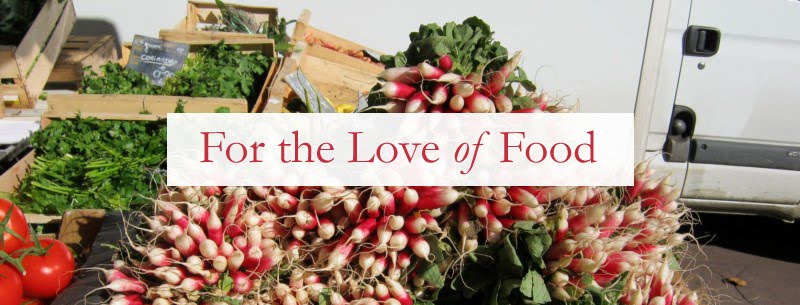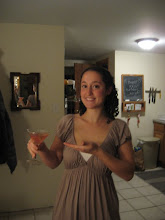A related form of cooking mythology is the "happy accident" variety. You know what I'm talking about: those recipes that are supposed to have developed through some chef's error that, magically, turned out to be even more delicious than intended. Toll House cookies probably best exemplify this category. The accepted story goes like this: in the 1930s, Ruth Graves Wakefield was the owner of the Toll House Inn in Whitman, Massachusetts. One night, running low on the unsweetened bakers' chocolate that she used to make the inn's popular chocolate cookies, Whitman decided to break a semisweet chocolate bar into chunks and mix them into her plain cookie dough in the hopes that the chocolate would melt in the oven and create a chocolate cookie. But of course, the chunks stayed intact, resulting in an equally, if not more addicting cookie that has gone on to become the most popular American dessert since apple pie.
Now, I tend to mistrust stories like this. Why? Because I think that most accomplished cooks and bakers, like the ones featured in these recipe myths of origin, tend to be knowledgeable enough to be able to predict how their ingredients will react. Chefs aren't just running around kitchens throwing things into bowls and hoping that they'll taste good in the end (well, not usually, at least). Particularly in the Toll House cookie example, the story just seems far fetched: any experienced baker would know that the chocolate chunks in the cookie wouldn't melt, and so on and so forth for the many other "oops I made a mistake but wow does that taste good" tales that exist.
Or so I thought. Until that very thing happened to me. Allow me to set the scene: it was Thursday, June 17, 2010, and I was hard at work in the kitchen creating a rhubarb, apple, and blackberry tart. I had never made one before, but I knew, more or less, where to begin. I started by making an all-butter pastry crust in my brand-new, shiny Cuisinart, mixing the dough only the barest amount, using the smallest bit of water possible to make it set, and allowing it to rest comfortably in the refrigerator for half an hour before even thinking about attempting to roll it out. I was feeling confident as I set to work on the filling, which consisted of sliced apples, sliced rhubarb, whole blackberries, lemon zest, cinnamon, and sugar.
But not enough sugar. Much to my dismay, after smelling the warm, enticing aromas of browning butter and softening fruit during the hour or so that the tart spent baking, I pulled a beautiful, delicious-looking pastry from the oven and stuck an eager fingertip into the bubbling juices--only to pucker up in disgust at the sour taste. I didn't use enough sugar! And I'm due at a barbecue in a half hour! I racked my brain for possible solutions, and there seemed to be only one: I grabbed a box of raw brown sugar from my pantry and sprinkled a generous handful of the coarse crystals over the fruit, then stuck it back in the oven, under the preheated broiler. In about a minute, when the sugar had turned into a tawny, crackly glaze--exactly like the one you find atop crème brûlée--I declared the tart done. There was nothing else I could do.
Later on, at the aforementioned barbecue, I duly cut my tart into even slices, but with a heavy heart: I had little hope for it now. My friends gathered around to try it, and I sat back to gauge their reactions. And much to my delight, far from running to the nearest trash can or patch of grass to indelicately spit out the bitter crumbs, my pals were oohing and aahing with delight, reaching back for seconds and thirds. I tried a piece. It was phenomenal: the crunchy sweetness of the caramelized sugar topping followed by soft, yielding fruit; the whole thing anchored by a light, crumbly, and buttery crust. It was a mistake, and yet it was so good. I guess happy accidents really do exist.

Bruléed Apple, Rhubarb and Blackberry Galette
Serves 8
Ingredients:
1 stick (8 tbsp.) very cold unsalted butter, cut into small cubes
1 1/2 c. all-purpose flour
1/2 tsp. salt
3 to 4 tbsp. ice water
1 large apple, peeled and cut into thin slices
3 large stalks rhubarb, peeled and cut into thin slices
1/2 pint blackberries
1 1/4 c. sugar
1/2 tsp. ground cinnamon
Zest of one lemon
2 tbsp. all-purpose flour
1 tbsp. unsalted butter
About 4 tbsp. raw brown sugar, or granulated sugar
Preparation:
1. Make the dough: in the bowl of a food processor, combine the flour and the butter. Pulse several times to distribute the butter. Pulse several more times, adding as little ice water as possible, until the dough comes together in a smooth ball. Do not overmix, as this will result in tough dough. (Alternatively, you can mix the dough by hand, but a food processor will produce a lighter, flakier crust.)
2. Wrap the ball of dough in plastic wrap and flatten it slightly into a disk. Place in the refrigerator and chill for 30 minutes to one hour.
3. Meanwhile, make the filling: combine the apple, rhubarb, blackberries, sugar, cinnamon, and lemon zest in a large bowl and toss to combine. Let it sit while you wait for the dough.
4. Preheat the oven to 350°.
5. Remove the dough from the refrigerator and let it sit at room temperature for about 5 minutes. Then, working on a large, flat, well-floured surface, use a rolling pin to roll the dough out into a large oval of about 1/4" thickness. Carefully transfer the dough to a large cookie sheet.
6. Evenly sprinkle the 2 tablespoons of flour over the fruit filling and toss to combine. Carefully spread the filling over the center of the tart dough, leaving the outer 1 1/2 inches of dough bare. Carefully fold the dough edges over the filling, creating an ovular tart. Break up the 1 tablespoon of butter into small pieces and dot them over the fruit filling.
7. Place the tart in the oven and bake for 1 1/4 hours to 1 1/2 hours. When done, the tart dough will be golden brown, and the fruit filling will have cooked down and set.
8. Remove the tart from the oven and turn the oven to the broiler setting. Sprinkle the additional 4 tablespoons of sugar evenly over the fruit and place it under the broiler for about 2 minutes, or until the sugar has melted. Be careful not to burn the sugar.
9. Let the tart cool to room temperature before slicing into 8 portions. Serve (preferably with vanilla ice cream).



